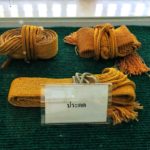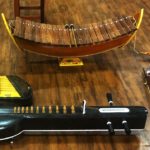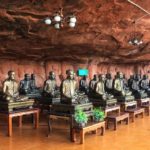Thai Temple Bell Towers, Drums & Gongs
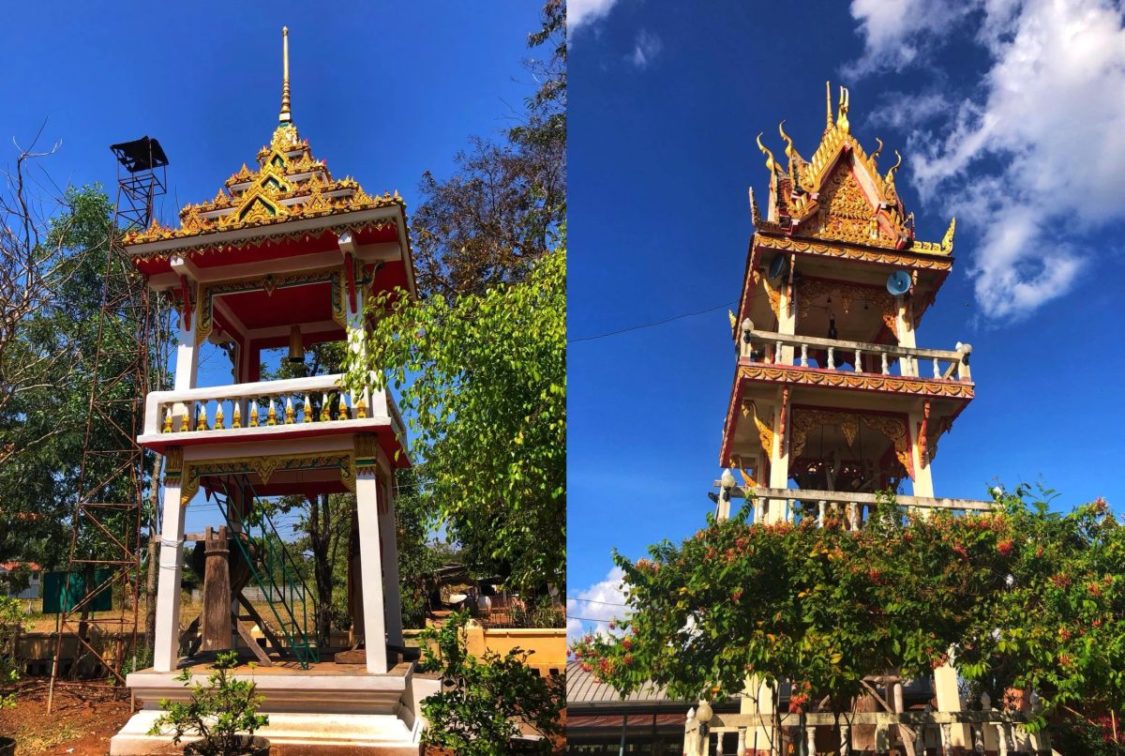
Thai temple bell towers, known as Ho Rakang (หอระฆัง), traditionally have played a central role of village life in Thailand. Years ago, when most villagers didn’t own clocks (much less smartphones), the temple’s bell, drum, or gong would sound periodically throughout the day as the village timepiece.
Today, one of the main functions of a temple bell tower is to awaken Thai monks in the morning. Traditionally, this was at 4 am, and lasted for 20 minutes (to make sure the monks woke up). Today many temples will climb the bell tower at 5am, and the length of drumming varies.
The rhythm of the morning drum beat is usually three slow strikes of the drum. The end of any session is usually signaled by three quick strikes to the drum or bell — the bell being made of metal or wood.
The morning bell also serves to alert members of the village that it’s time to wake up and prepare breakfast for the monks who will be walking by their homes with their alms bowls soon, or receiving their alms of food at the temple. It’s also a nice reminder to start your day by meditating for a few minutes on how you will approach the day with kindness, generosity, and mindfulness (i.e. the dharma).
Now, you may be wondering, are any Thai people bothered by the early morning temple bells? Not really. Most people in Thailand are undisturbed by loud noises (as illustrated by all the pickup truck vendors who drive around villages blaring out sales pitches on loudspeakers).
While there was a famous case a few years ago where a Bangkok condo resident complained about “noise pollution” from a nearby temple, such complaints are exceedingly rare in Thailand.
It also should be noted that most Thai temples don’t ring a large bell in the morning, but pound a long drum, which has a pleasing sound, and is less likely to disturb villagers who are still in bed. The sound of the drum also is said to displease evil spirits and ghosts, thus clearing the path for a good day.
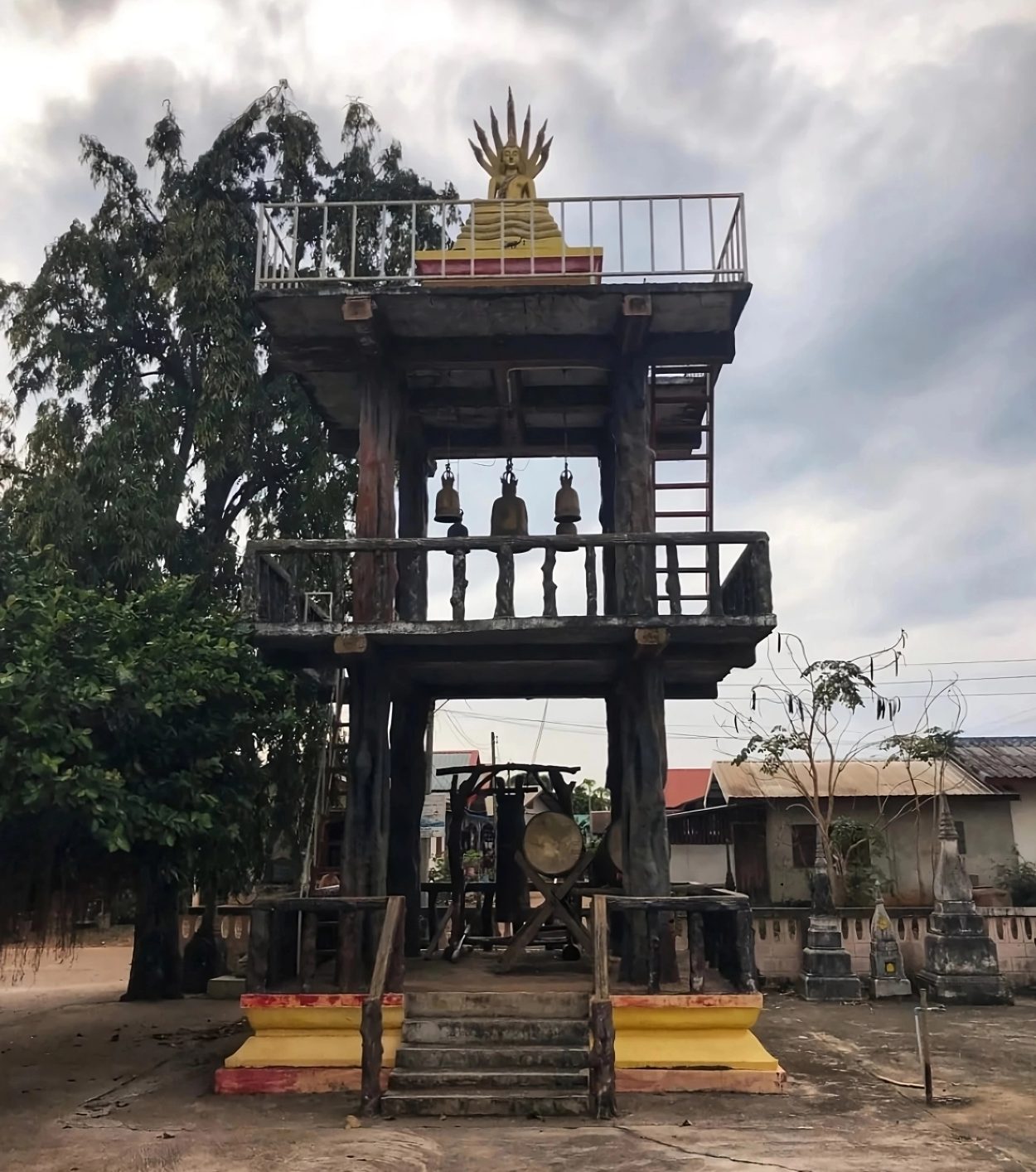
When Else Are Temple Bells Sounded in Thailand
Traditionally, a Thai temple would strike the bells or pound the drum not only early in the morning, but at other times of the early day to alert the monks to prayers, temple duties, and lunchtime. But this is done less so today.
However, a monk will often ascend the bell tower at 4 pm to let the monks know that it is time to meet for evening prayers. The drumming at this time will only last for about 10 minutes. And the 3 chime rhythm of the morning drum call is sometimes replaced by a 4 beat rhythm (although it will end again with 3 quick strikes).
Temple bell towers become more active during the Buddhist Lent period, which occurs during the Thailand’s rainy season. At this time, many Thai temples will hold fast to beating the bell, gong, or drum twice daily at 4 or 5 am and at 4 pm, as this is the period when novice monks are being trained and ordained.
Outside of the 3 month Buddhist Lent, some Thai temples use the bell tower only during the Buddhist Sabbath in Thailand (Wan Phra), which occurs 4 times a month based on the waxing and waning of the moon, or on a special occasion, such as a Buddhist holiday, lunar or solar eclipse, and the birthday or death day of a revered Thai monk.
Striking the drum or bell on Wan Phra (วันพระ) serves two purposes: alerting the monks that it is time for prayers, and notifying the villagers it’s Buddha Day (and thus time to visit the temple, make merit, meditate on the dharma, and strive to keep the 8 precepts of the Buddha).
Lastly, the temple bell tower is used to alert the Thai village in case of emergencies, such as a fire, robber on the loose, or some other urgent matter. In this case, the drum or bell will be stuck quickly and loudly with no pleasing rhythm, to signal the village that they should come to the temple immediately, because there is an urgent matter that needs tending to.
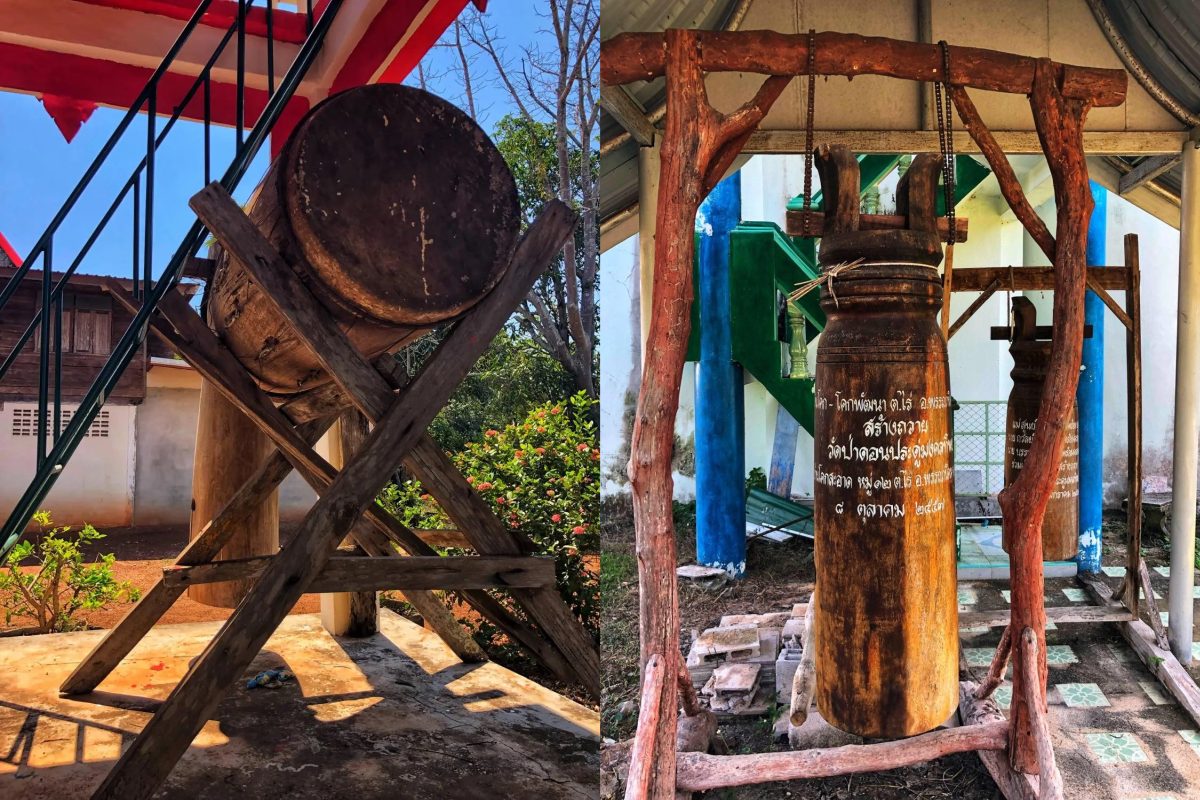
Thai Bell & Drum Tower Architecture
The architecture of Thai bell towers vary greatly. Having viewed well over 200 bell towers in Thailand, we can confidently say that no two are alike, especially in the Isaan province of Sakon Nakhon. However, bell towers at Thai temples do share some common architectural features.
First, it should be noted that every temple in Thailand must have a bell and drum tower, so as to alert the monks and novices of the time of day and the monastic duties they are to perform in unison. This was true even for the ancient temples of Ayutthaya.
At some Thai temples the bell tower and drum tower are separate buildings, and sometimes the same tower is used for both bells and drums. At other temples, the drums are positioned inside the Viharn (sermon hall), and only bells are placed in the tower.
In addition, wooden bells and gongs sometimes are placed in a small pavilion on the temple grounds so visitors can strike them.
In Thailand’s rural areas, the drum and bell towers are constructed primarily of wood, while inner city temples are often constructed of a mixture of brick, cement, and wood. All are composed of a raised platform structure amidst four pillars, with various bars separating all four sides.
The tower can be two or three floors high, and include a square, octagonal and cylindrical shapes. If two stories high the drums are usually positioned on the first floor; if three stories high, the second floor.
The roof gables are decorated with ornaments that resemble Naga fins, Garuda feathers, Roosters, Swan tails, and other Thai motifs. The roof is ordinarily covered with terracotta tiles. However, sometimes the roof is a solid platform on which a Buddha statue rests.
Under the ceiling the bells are hung and/or the drums and gong. There is a small ladder that leads up the platform, so a monk can strike the bells or drums.
- Affirmations in Buddhism & Thailand - June 7, 2025
- Speak Thai Naturally Without the Gymnastics - April 20, 2025
- The Best Learn Thai Podcast and YouTube Channel - April 10, 2025


